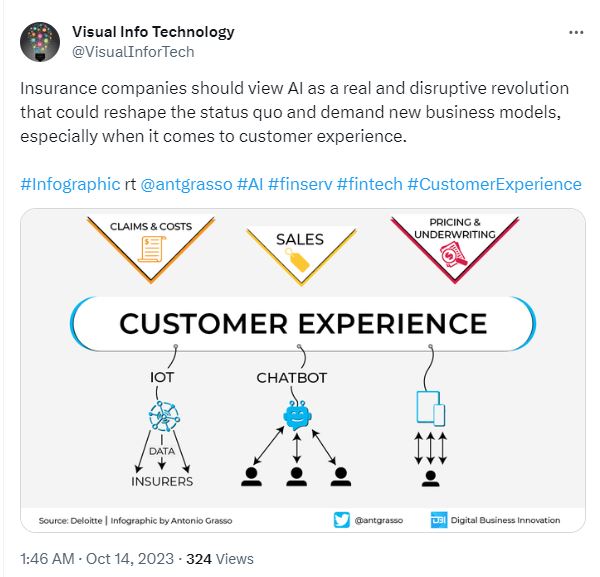
Digitizing insurance can be rather challenging. (Image generated by AI)
Why Southeast Asia struggles with insurtech in its journey to a digital future
- In the journey to a digital future, insurtech remains a challenge in Southeast Asia.
- Part of this is due to insurance illiteracy, a problem that needs to be solved.
- At the same time, the journey towards integrating AI into insurance operations is undeniably challenging.
As the world moves towards a digital future, more processes and experiences are being digitized. Despite concerns about privacy and security, governments and organizations around the world are aware that a failure to strive towards a digital future will only mean they’re left behind and have to play catch up with the rest of the world – which for some economies might provbe impossible if the moment is missed.
The financial, manufacturing and healthcare industries have already been championing digitalization for a wide range of processes. Retail and e-commerce are creating new experiences for consumers, while government agencies are also digitizing most of their processes to remove manual mundane and repetitive tasks from the day.
For the insurance industry, a digital future would mean not only processing claims with the help of AI, but also being able to communicate, understand and serve consumers a lot better, a lot faster.
Insurance technology or insurtech encompasses various technological solutions, including AI, data analytics, blockchain, and digital platforms, to improve and modernize the insurance process for a digital future.
Insurtech companies use these technologies to create new business models, improve operational efficiency, enhance customer experience, and develop innovative insurance products.

What is a digital future? Is it about digitizing every process or more? (Image generated by AI)
Today, insurtech has disrupted the traditional insurance industry by promoting innovation, increasing competition, and providing customers with more choices and convenient ways to interact with insurance services.
In Southeast Asia, despite leading towards a digital future, insurtech can be rather challenging, given the understanding of insurance as a product by many. In a conversation with Tech Wire Asia, Prasanta Roy, general manager of White Label & Tune Protect group chief technology officer shared how the insurtech organization is making a difference in the region, especially in enabling a digital future for the insurance industry.
TWA: How challenging is the landscape of insurtech in Southeast Asia?

Prasanta Roy, general manager of White Label & Tune Protect Group chief technology officer.
In Southeast Asia, the foremost challenge within the insurance sector is the notable disparity between insurance literacy and financial literacy. Insurance literacy, unfortunately, lags behind by approximately half when compared to financial literacy. This gap poses a significant hurdle in letting people fully comprehend the benefits and nuances of insurance products.
Another major challenge pertains to the high claims ratio within the region. This could be attributed to various factors such as underpriced policies, inadequate risk assessment, or the prevalence of riskier profiles, leading to potentially fraudulent claims. Addressing these issues is crucial to achieving a balanced claims experience and ensuring the sustainability of the insurance market.
Despite the challenges, the Southeast Asian insurance market presents an exciting landscape for growth and development. Currently, insurance premiums as a percentage of GDP stand at an average of 2.5% or even lower, notably below the global average of 5%. This suggests a substantial growth potential within the region.
Moreover, the rise in income levels and the increasing connectivity of approximately 78% of the population online provide a promising opportunity for insurtech companies. Using modern technology, insurtechs can effectively reach out to consumers digitally and convey information about their products, overcoming a historical challenge.
However, it’s important to recognize that while insurtechs possess advanced technological solutions, a challenge remains in bridging the gap with consumers who still prefer traditional channels due to trust issues. Building trust through transparent and reliable services will be crucial for insurtechs to effectively engage with a diverse consumer base in Southeast Asia.

Customers frequently perceive traditional insurers as inflexible and not sufficiently customer-focused. (Image generated by AI)
TWA: What are the challenges faced by insurers in their digitalization journey?
One of the most significant challenges traditional insurers grapple with is their reliance on legacy IT infrastructure. These aging systems, while functional, often create bottlenecks, making it challenging to provide a seamless and efficient customer experience. The disparity between these legacy back-end processes and the modern, user-friendly digital front ends can result in a mediocre customer journey.
Unfortunately, despite considerable technological investments, customers frequently perceive traditional insurers as inflexible and not sufficiently customer-focused. The core issue lies in the extensive timelines and complexities associated with modernizing these essential systems. These IT projects, especially when aiming to overhaul core systems, often span multiple years and geographic regions, making them an intricate endeavor.
Introducing innovative products such as cyberinsurance or parametric offerings poses a distinct challenge for insurers. The modern consumer demands faster and more tailored digital products. However, traditional insurers face hurdles in swiftly adapting to this demand due to their reliance on digitized rather than truly digital products.
To navigate this, insurers need to streamline their product development processes and pivot towards agile methodologies. This shift allows for faster ideation, prototyping, and market implementation of products like cyber-insurance or parametric solutions. Embracing agility enables insurers to deliver bite-sized, highly relevant products to meet evolving customer needs promptly.

Collaboration between insurers and insurtechs demands a meticulous approach to data privacy. (Image generated by AI)
TWA: How can insurance companies ensure data privacy and security is not compromised when using insurtech?
Maintaining robust data privacy and security is a critical imperative for insurtech companies in today’s digital landscape. Before and after going live, it is essential for all insurtech platforms to undergo comprehensive and rigorous testing. This encompasses vulnerability assessments and adherence to best practices in security measures to fortify the resilience of their systems against potential threats.
Specifically regarding data privacy, insurtechs must establish and uphold stringent security policies in alignment with regulatory requirements in each country of operation. This includes safeguarding policyholder information with the utmost confidentiality. Encryption of data end-to-end is a fundamental step to ensure sensitive information remains protected throughout its lifecycle.
Collaboration between insurers and insurtechs demands a meticulous approach to data privacy. Insurers should have their own well-defined data classification system, a structured data library, and a comprehensive privacy policy. Throughout the collaboration process, these policies need to be consistently reviewed and updated to align with evolving privacy standards.
Moreover, insurers should establish a clear framework for evaluating and validating the data privacy and security measures implemented by insurtech partners. This mutual diligence ensures a cohesive approach to data protection while fostering a collaborative environment for innovation and technological advancements in the insurance sector.

AI can make a real difference to insurance.
TWA: What is the role of AI in insurtech?
AI is poised to revolutionize the insurance landscape by introducing unprecedented levels of agility and adaptability. Its capacity to rapidly assimilate diverse data types and innovative thinking sets the stage for a remarkable transformation. As AI transitions into mainstream adoption, we can anticipate significant investments from insurance companies, especially considering that AI is still in its infancy for many insurers.
The benefits of embracing AI are vast and varied. From expediting claims processes to enhancing operational efficiency, driving product innovation, and elevating the overall customer experience, AI is a powerful catalyst for positive change within the industry.
The journey towards integrating AI into insurance operations is undeniably challenging. One of the major hurdles is the substantial investment required to implement AI at scale. This encompasses not only the technology itself but also acquiring high-quality data to train accurate models. Fostering a data-driven culture within the organization and securing the right talent to navigate this transformative journey are also critical challenges.
However, insurance companies can effectively mitigate these obstacles by tapping into the talent within their organizations. Upskilling citizen data scientists and empowering existing teams to harness AI for addressing organizational use cases can add significant value. It is about cultivating an environment that encourages learning and innovation, enabling the workforce to become proficient in using AI tools and technologies.

The benefits of embracing AI are vast and varied.
TWA: How is White Label accelerating the digitalization of the industry?
White Label plays a pivotal role across the B2B, B2B2C and B2C segments within the insurance sector. Its versatility lies in its ability to accelerate digital product creation and enhance time-to-market, especially in the face of legacy platforms that pose challenges for developing new-age digital products.
At its core, White Label uses its digital accelerator platform and ‘insurtech-in-a-box’ concept, seamlessly integrating with legacy back-end systems. This synergy enables the rapid creation of diverse insurance products, all while simplifying underwriting through an embedded AI-driven module.
White Label serves as a linchpin in digitally distributing insurance products. Its open digital architecture, which is cloud-native, operates like modular Lego bricks, offering the flexibility to pick and choose specific components. This flexibility facilitates a faster and more efficient distribution process, particularly through B2B or B2B2C platforms.
Moreover, White Label embodies the ‘API first’ principle, showcasing a commitment to digitization and collaboration. It collaborates with a broad spectrum of partners, spanning industries like airlines, telcos, logistics, ride-hailing, loyalty programs, e-commerce, and more. This collaborative approach lets White Label extend its digitization capabilities effectively across various industry verticals.

The modern consumer demands faster and more tailored digital products. (Image generated by AI)
TWA: What are the benefits of White Label’s digital solution? And what’s the future direction of White Label in Southeast Asia?
White Label’s Insurtech-in-a-box is a game-changer in the insurance industry, drastically reducing product development timelines. Traditionally, creating insurance products could take months, but with this innovative solution, the timeline is significantly condensed. Insurers now have the ability to go from concept to market-ready products in a matter of days, a remarkable shift that empowers the industry to keep pace with evolving market demands.
Our approach to distribution is similar. The platform provides insurers with the flexibility to distribute their insurance products seamlessly across various channels and segments based on specific needs. Whether it is targeting a particular demographic or collaborating with industry verticals looking to venture into insurance, this platform offers a comprehensive solution to meet diverse distribution requirements.
White Label has made significant strides in the Middle East and Asia, and its headquarters in Malaysia has been a strategic base for these operations. Currently, it is actively exploring opportunities to expand into other ASEAN markets. Already established in Malaysia, Thailand, and Vietnam, White Label is keen on further growth and collaboration, partnering with leading insurers in each market. Their dedication to advancing insurance technology and making a difference in the industry is truly commendable.
As such, White Label has successfully collaborated with 29 insurers across 49 countries, reaching far beyond its initial partnership with Tune Protect. Their reach extends across key regions, including the Middle East, Africa, and Southeast Asia. This broad network of partnerships underscores White Label’s commitment to transforming the insurance landscape on a global scale.
READ MORE
- Safer Automation: How Sophic and Firmus Succeeded in Malaysia with MDEC’s Support
- Privilege granted, not gained: Intelligent authorization for enhanced infrastructure productivity
- Low-Code produces the Proof-of-Possibilities
- New Wearables Enable Staff to Work Faster and Safer
- Experts weigh in on Oracle’s departure from adland






